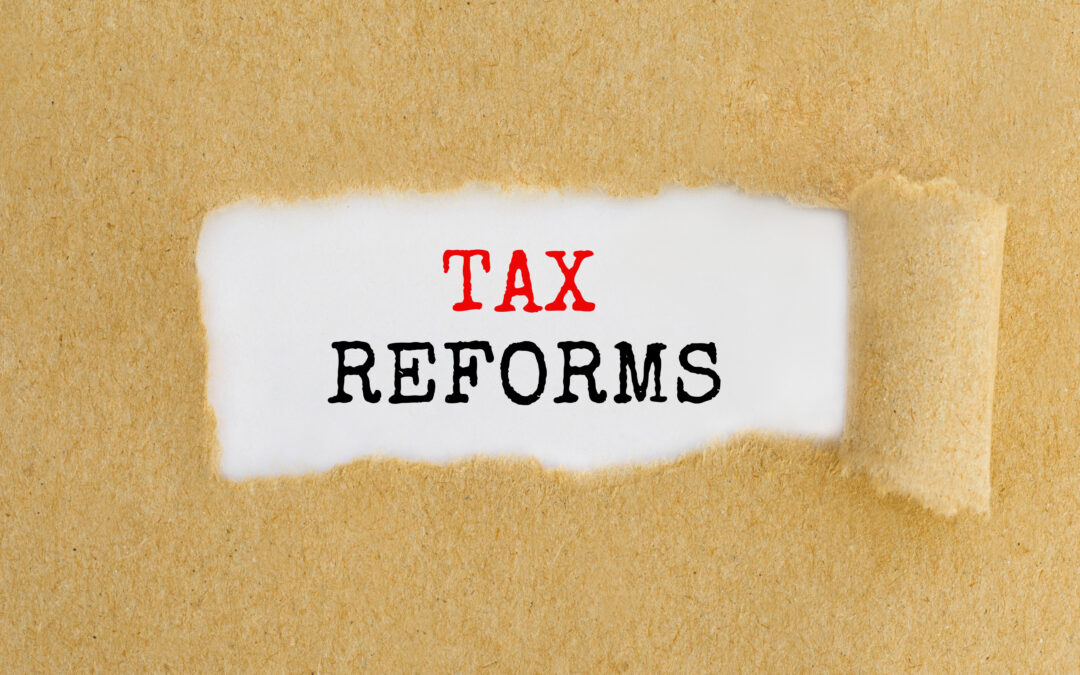The year 2025 marks a turning point in U.S. tax policy, with scheduled adjustments and potential reforms that every taxpayer should understand. This in-depth analysis will prepare you for upcoming changes and help you make smart financial decisions.
The 2025 tax system presents two distinct aspects: routine inflation adjustments implemented annually by the IRS, and the uncertainty created by the impending expiration of the Tax Cuts and Jobs Act (TCJA) at year’s end. This dual scenario creates both opportunities and challenges for personal and business financial planning.
The inflation adjustments for 2025, calculated at approximately 2.8%, will affect multiple aspects of the tax system from income brackets to retirement contribution limits.
However, the real inflection point will come with political negotiations around the TCJA that could redefine fundamental aspects of the tax code.
You may also read: IRS Maintains Interest Rates for the Third Quarter of 2025
Detailed Breakdown of Confirmed Changes
Tax Rate Structure
The seven-tier rate structure remains unchanged (10%, 12%, 22%, 24%, 32%, 35%, and 37%), but with significant adjustments to income thresholds. These changes aim to offset inflation’s erosion of purchasing power.
For single filers, the jump from 24% to 32% occurs at $197,300, while for married couples filing jointly this change happens at $394,600. These adjustments represent increases of about 3.5% from 2024, slightly exceeding general inflation.
High-income taxpayers should pay particular attention to the new threshold for the top 37% rate, which now applies to income above $626,350 for singles and $751,600 for couples.
While seemingly minor, these changes can significantly impact income deferral strategies and executive bonus planning.
Deduction and Exemption Modifications
The standard deduction sees a notable increase to $15,000 for singles and $30,000 for married couples. This adjustment, exceeding inflation, continues the TCJA trend of simplifying tax filing for most taxpayers.
However, it’s crucial to understand this increase doesn’t necessarily mean a net benefit for all taxpayers.
Those with significant itemized deductions (like mortgage interest, charitable contributions, or high medical expenses) should perform comparative analysis to determine which deduction method works best for them.
Investment Tax Adjustments
Long-term capital gains rates maintain their traditional structure but with important threshold adjustments. The 0% bracket now extends to $48,350 for singles and $96,700 for couples, creating strategic opportunities for those planning asset sales.
Investors should carefully consider “income bunching” strategies to maximize these brackets, especially in years with income fluctuations. Timing of stock, property, or other asset sales can be significantly optimized with these new parameters.

Retirement Planning and Tax Benefit Changes
Retirement account contribution limits see some of 2025’s most significant adjustments.
401(k) limits increase to $23,500, while traditional and Roth IRAs maintain their $7,000 cap, with additional catch-up contributions for those 50+.
A particularly relevant change affects workers aged 60-63, who can now make catch-up contributions up to $11,250 in their 401(k) plans – a measure designed to help those nearing retirement compensate for years of lower savings.
Preparing for Uncertainty: The TCJA Sunset
The real challenge of 2025 lies not in confirmed changes, but in the unknown of TCJA expiration. Without Congressional action, pre-2017 tax provisions would automatically return, meaning:
- Reduced standard deduction
- Across-the-board tax rate increases
- Stricter limits on state and local tax (SALT) deductions
- Significant changes to estate tax exemptions
This uncertainty creates unique planning opportunities. Potential strategies include:
- Income acceleration: Recognizing income in 2025 if higher rates are anticipated for 2026
- Deduction deferral: Postponing certain deductions to potentially higher-rate years
- Estate planning: Utilizing current generous estate tax exemptions before potential reductions
Recommendations for Effective Tax Planning
Given the complex landscape of 2025, Wave Tax recommends to our clients:
- Comprehensive review: Analyze your current and projected tax situation
- Flexibility: Develop strategies adaptable to various political outcomes
- Professional guidance: Consult a tax specialist to optimize your position
- Ongoing monitoring: Stay alert to legislative developments throughout the year
Conclusion: Opportunity Amid Change
2025 represents both challenge and opportunity in tax planning. Informed, proactive taxpayers can navigate these changes effectively to protect assets and optimize their position.
The key lies in understanding confirmed changes, anticipating possible scenarios, and maintaining flexibility to adjust strategies as the legislative landscape evolves.
✅ Remember each financial situation is unique. What works for one taxpayer may not be optimal for another. Don’t forget that at Wave Tax, personalized planning based on a thorough analysis of your specific circumstances will be more important than ever in this year of tax transition.

